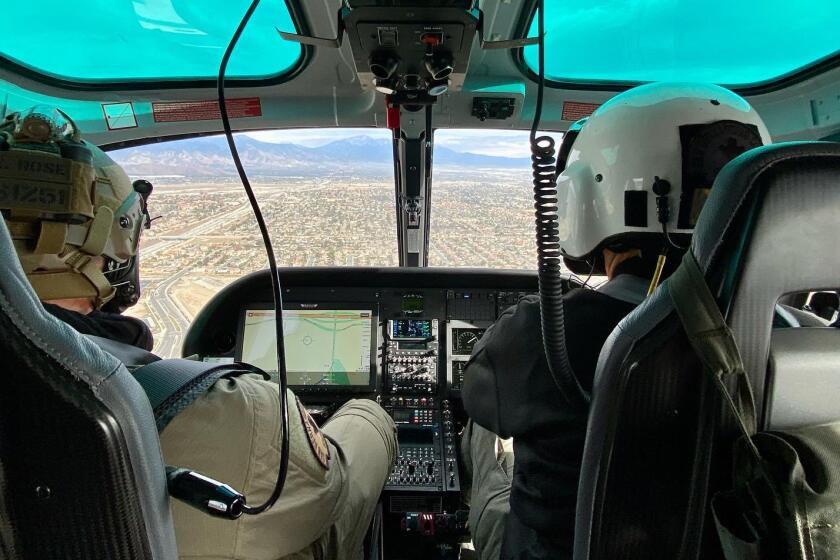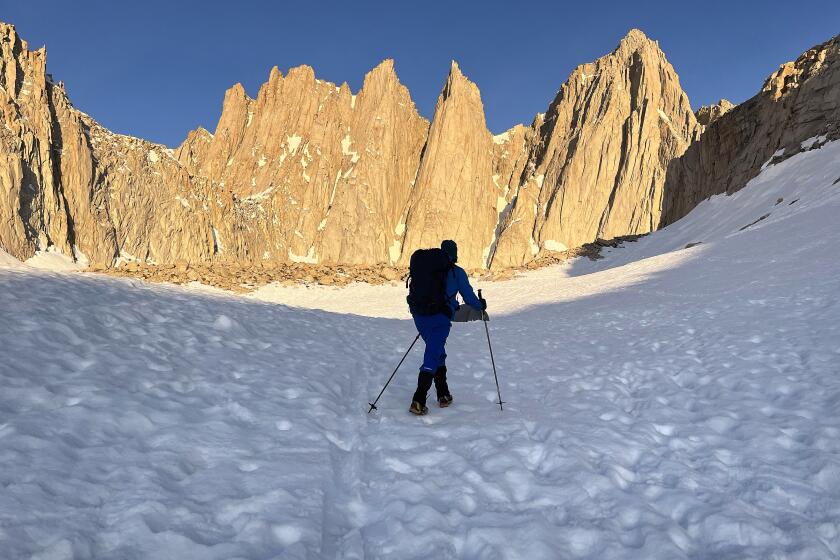Boots. Bones. An ID with a familiar face. Hikers who found Julian Sands tell their story
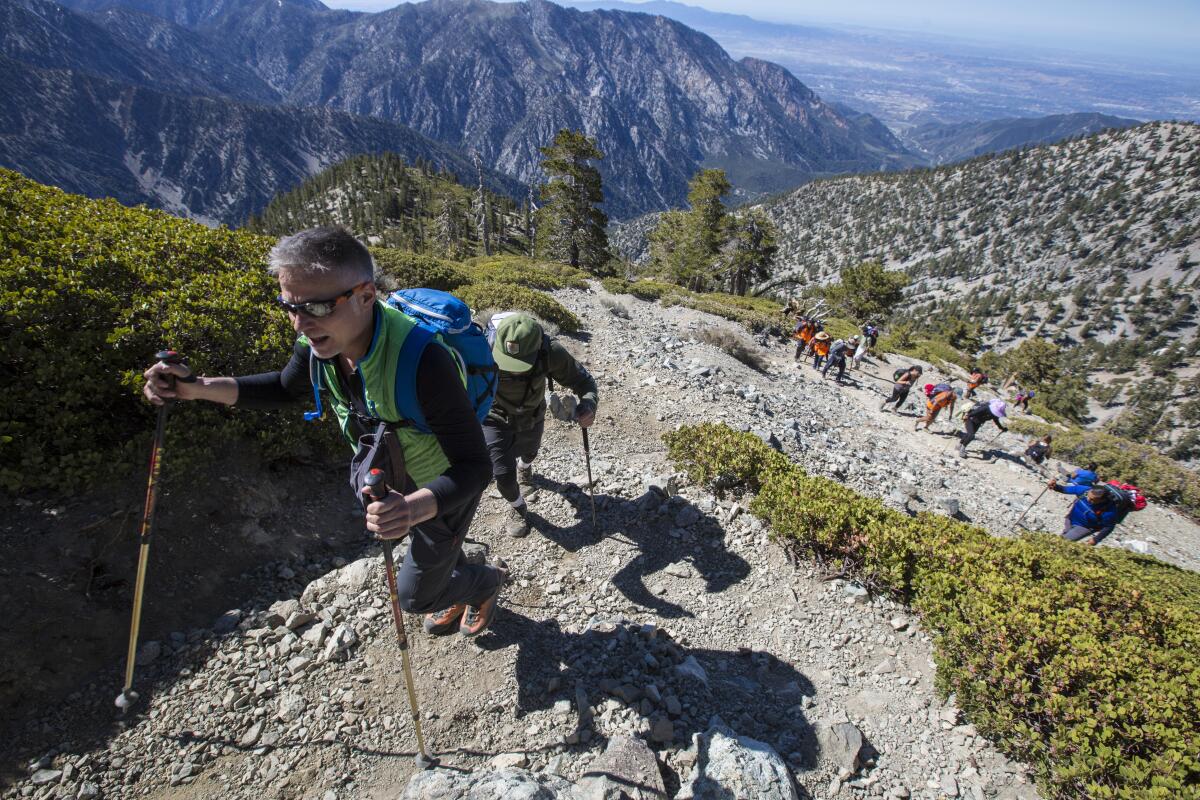
- Share via
When a group of local hikers started up Mt. Baldy in June, by way of a rugged and rarely traveled canyon, their organizer had a nagging fear in the back of her mind: “I hope we don’t find a dead body today.”
Like most everyone else in Los Angeles’ hiking community, she and her friends had followed the news of British actor Julian Sands’ disappearance on the mountain in January. They knew that repeated searches by authorities, including one just a week before with helicopters circling above and 80 people scouring the rocky terrain, had come up empty.
They also knew that the last-known ping from Sands’ cellphone put him on an icy ridge beneath the summit, where an inadvertent step could have sent him sliding uncontrollably into the remote canyon they were about to climb.
So the hikers weren’t completely surprised when, three hours into their ascent on June 24, one of them spotted a boot. They found another boot a few yards up the hill. Then some trekking poles. And some bones. Close by, they came upon a pile of dark winter clothes. In a pocket they found a wallet with a driver’s license.
The chiseled, angular face staring back at them was all too familiar; the name erased any lingering doubt: Julian Richard Sands.

“It was surreal,” said Bill Dwyer, one of the hikers.
In the weeks that followed, the hikers shared their stories with friends and family, but they have avoided the media. Dwyer and the group’s organizer, who asked that her name not be published to protect her privacy, spoke with a Times reporter who reached out. Neither wanted to share details that might add to the grief of Sands’ family, but they wanted to help educate fellow hikers about the dangers of climbing in winter without a full set of safety gear.
For many Angelenos, especially those who have climbed to Mt. Baldy’s 10,000-foot summit in the summer in tennis shoes and shorts, it’s almost inconceivable that someone could simply disappear up there for five months. But the mountain’s sheer familiarity — millions of people live within an hour of the trailhead — can create a false sense of security, especially in winter.
In January alone, 15 hikers were injured or lost on Mt. Baldy, and two died. San Bernardino County’s sheriff is asking for new measures to restrict access to the peak.
Since 2020, there have been well over 100 searches for missing hikers and at least seven confirmed fatalities, making Baldy one of the deadliest mountains in the United States.
The death and lengthy disappearance of Sands, 65, an experienced climber who starred in “A Room With a View” and “The Killing Fields,” are a testament to just how wild and unforgiving the mountain can be.
After Sands was reported missing on Jan. 13, the San Bernardino County Sheriff’s Department conducted eight searches for him with teams in the air and on the ground. They spent more than 500 hours and more than $100,000. The cost would have been much higher except that most of the searchers were volunteers.
Their biggest obstacle was the weather. There was already plenty of snow and avalanche risk on the mountain when Sands went missing, and in the days and weeks that followed, a seemingly endless series of heavy storms rolled in, burying the terrain — and anyone lost in it — under piles of snow.
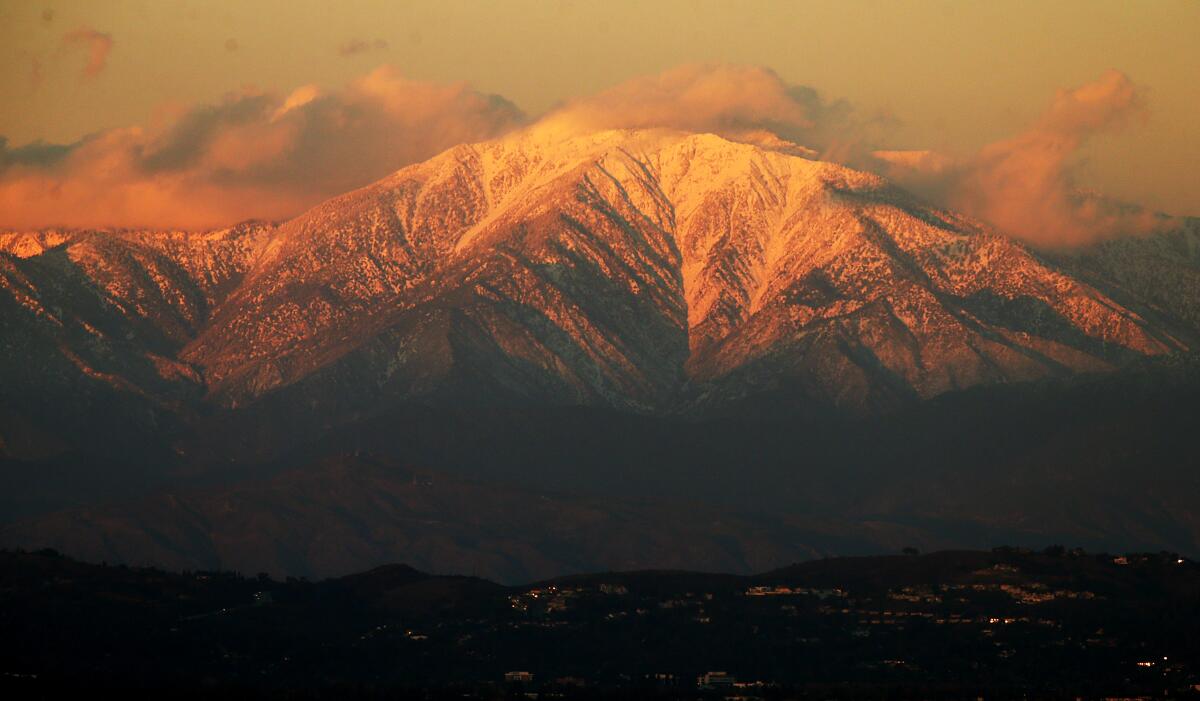
The would-be rescuers knew that Goode Canyon, where Sands’ remains were eventually found, was a likely place for him to end up. The last reported ping from his phone, according to the Sheriff’s Department, had come from a ridge on the Baldy Bowl trail. A fall from there, or simply losing the snow-covered trail and getting disoriented, would probably have led him in one of two directions: into the Baldy Bowl, a popular winter climbing destination where others probably would have spotted him quickly, or into Goode Canyon, where nobody was likely to find him.
Repeated searches of the canyon by helicopter, including one using advanced technology that can pick up a signal as faint as that from a credit card, detected nothing.
Sending people into the canyon on foot last winter was risky because of all the snow, said Donna Newlin, a member of San Bernardino County’s search and rescue team who was involved in some of the search efforts. It’s so steep and narrow in places that falling rock and ice can turn the canyon into a “shooting gallery,” she said.
During the big search in June, after most of the snow had melted, one group descended Goode Canyon from the top and another started up from the bottom. But they ran out of daylight and neither team made it to the middle section where the hikers found Sands’ remains a few days later.
“It was just one of those things,” Newlin said. “If they had gone another 600 feet farther down, they might have found him.”
But not necessarily. Even the hikers who stumbled upon Sands’ remains were struck by how well they blended into the landscape.
Even without much snow, the standard spring hike to Mt. Whitney’s summit is a punishing ordeal. But in this year’s extraordinary conditions, it is a full-on winter mountaineering expedition, requiring serious gear and the expertise to use it.
The group of about a dozen hikers started climbing around 6 a.m. that Saturday. They were planning to go up and over Mt. Baldy’s summit and descend by an equally steep route. The group’s organizer said it was her fifth or sixth time climbing Goode Canyon.
It’s grueling but beautiful, she said. “Full of wildflowers and waterfalls, it’s perfect for people who don’t like trails, like me.”
After about 3½ hours scrambling over boulders, trudging up slopes covered in loose gravel and bushwhacking through dense brush, they reached a flat spot at 8,400 feet. There, they spread out looking for a path of “least resistance” through the manzanita. The organizer said she walked past the first boot without noticing because the brush was so thick. A hiker a few paces behind was the first to see it.
It’s still not clear precisely how or when Sands died. The Sheriff’s Department has said the cause of death remains “undetermined” given the condition of the remains. A full autopsy report has yet to be released.
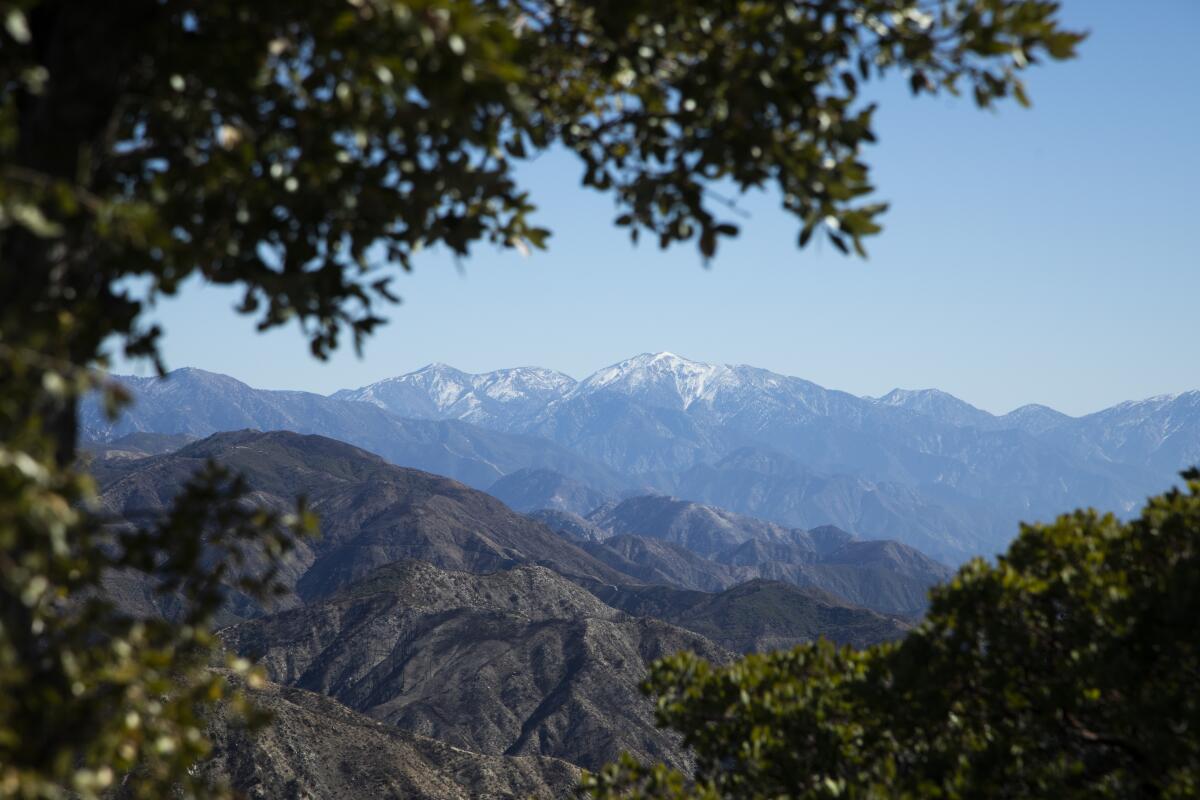
If Sands got lost or survived an initial fall without serious injury, trying to climb out of Goode Canyon — up steep walls covered in snow and ice — would have been an exhausting ordeal. If he were seriously injured, escape might have been impossible.
It’s also unclear how Sands’ remains came to rest in that flat spot. The bones were scattered, probably by wild animals, according to the hikers. But it’s also possible his body had been pushed down the mountain by avalanches or flowed downhill with melting snow.
The hikers did not find a backpack, which could have contained much of the gear he would have needed. But the hikers, most of them experienced mountaineers, were troubled almost as much by what they didn’t see as what they did.
For example, all of the clothing they found was dark, with nothing orange or red or yellow that would have made spotting him from the air easier. “He was dressed like a ninja,” one of the hikers said in disbelief.
Strapped to one of Sands’ boots was a set of microspikes. These are small metal cleats, about a quarter of an inch long, that can be attached to almost any kind of footwear. They’re easy to put on and take off and great if you stick to snowy trails that aren’t too steep.
But trails don’t really exist on mountains buried in snow, and Sands was traveling up steep, icy terrain where a minor slip can turn into a catastrophic slide in seconds. In such cases, microspikes are no substitute for crampons, long heavy spikes that attach to sturdy mountaineering boots and dig deep into snow and ice to prevent potentially fatal falls.
“I was a little shocked to see the microspikes,” Dwyer said. “They were just the wrong tools for the job at hand.”
Mt. Baldy towers over Southern California, beautifully decked with snow. Easy access helps make it one of the three deadliest peaks in the U.S. This winter, rescue crews have been busy.
There were no signs of a helmet or an ice ax, a lethal-looking tool winter mountaineers use to plant themselves in the snow and to stop themselves if they start to fall.
Sands had his cellphone — it was perched on a rock beneath a tree. But most of Mt. Baldy gets no reception, and the hikers could not find a signal in the area where they found Sands’ remains. They didn’t see any evidence that Sands, who was traveling alone, had another way to summon help.
After finding the remains, Dwyer used his Garmin InReach — a $400 pocket-size satellite-messaging device — to send an SOS with their exact location to authorities. They responded in eight minutes.
There are no hard rules about what gear you must carry to be safe on a mountain trek. Outdoors enthusiasts have been scaling rugged peaks for centuries to soak in their grandeur and solitude, well before much of today’s standard equipment was invented. Sierra Club founder John Muir, arguably the most adventuresome mountaineer in California history, probably never imagined a satellite-messaging device, and he died of old age in a Los Angeles hospital bed.
Still, the hikers who found Sands’ remains can’t shake the notion that his odds of survival might have improved substantially with better gear — especially if he simply got lost or was injured after a fall.
“Can you imagine the despair, the isolation?” said the group’s organizer. Hearing the helicopters, knowing people are looking for you, but having no way to signal to them. “I still have nightmares about that.”
More to Read
Sign up for Essential California
The most important California stories and recommendations in your inbox every morning.
You may occasionally receive promotional content from the Los Angeles Times.

